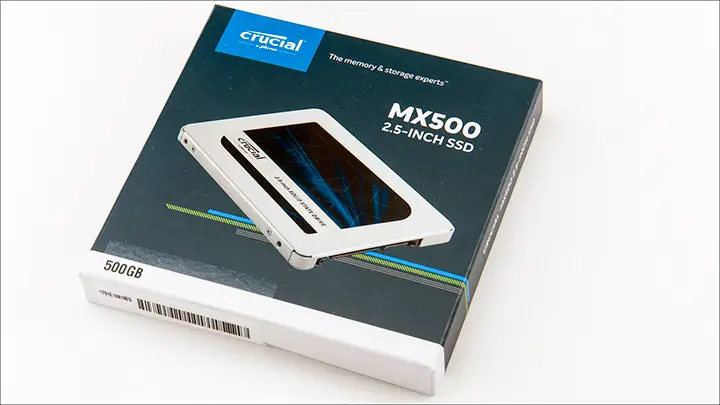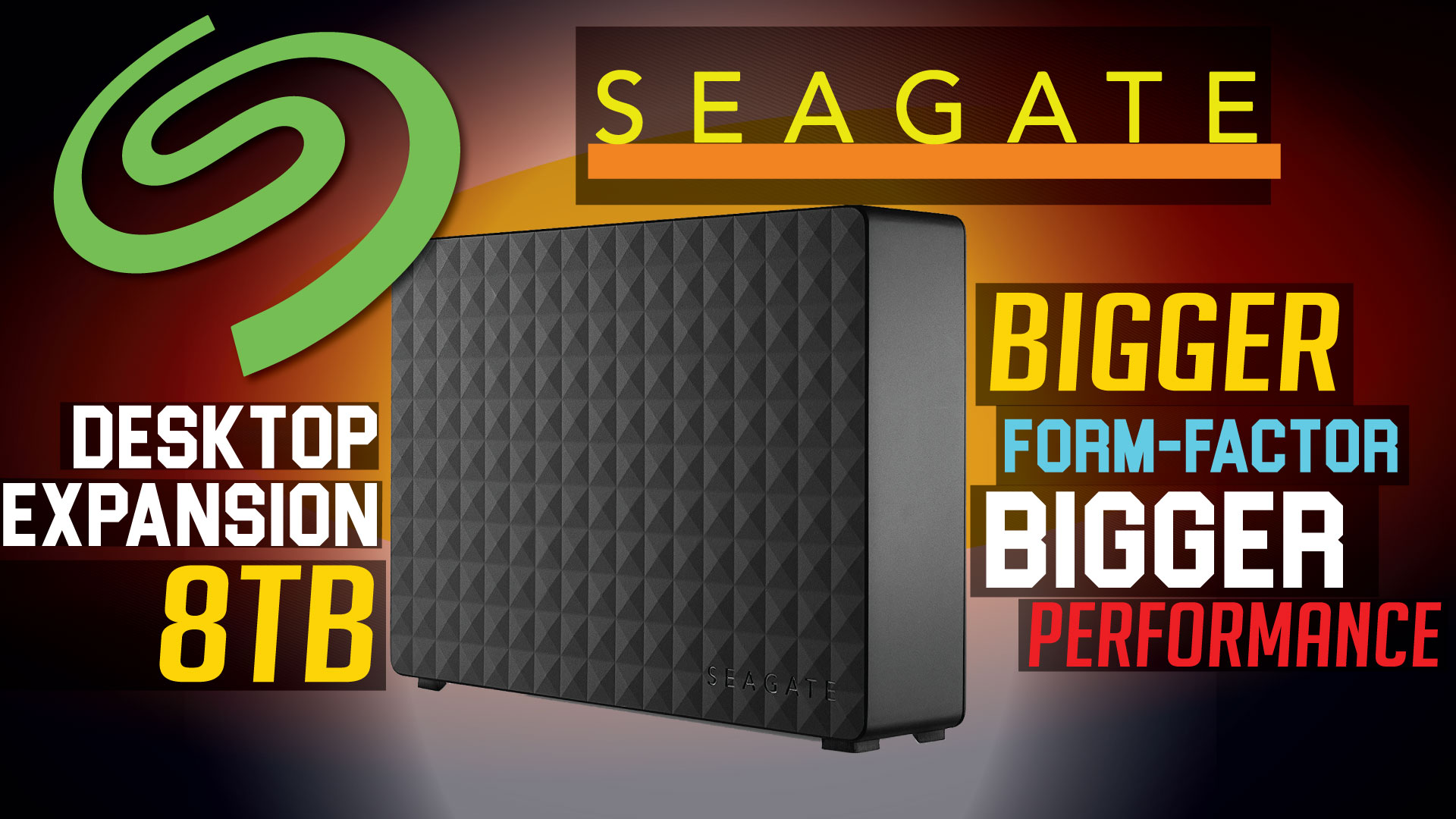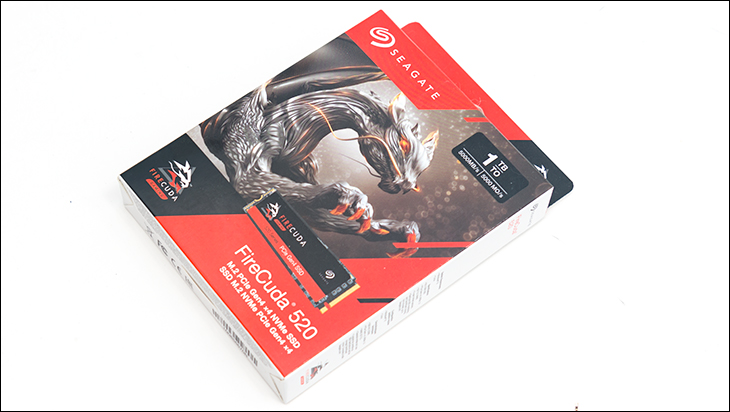
The shipping container the retail FireCuda 520 series uses is rather colorful and yet full of information. While a bit over the top for our conservative tastes it does get your attention and then makes a good argument for why you should ignore all the others on the shelving and purchase it instead. That is hard to argue with.
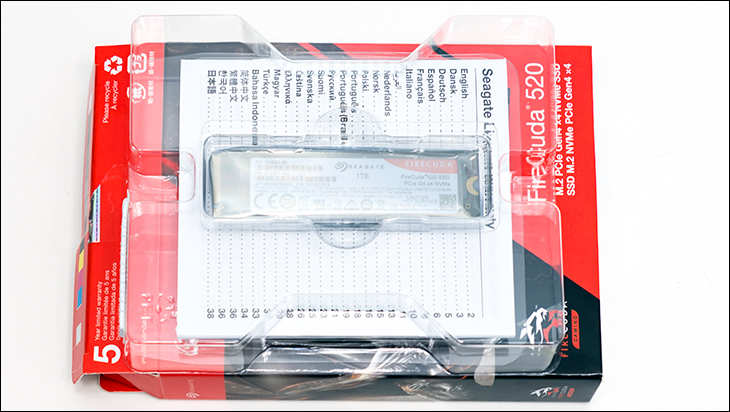
The internal protection consists of a multi-section, multi-part ‘clamshell’ plastic container that ensures the FireCuda 520 can not bounce around in the relatively large cardboard box, while also absorbing a good bit of blunt for trauma before any is passed on to the relatively fragile M.2 drive. Mix in a small ESD bag and this is a setup that should survive pretty much any of the usual levels abuse that shipping agents dish out on to your precious cargo while in their… ‘tender loving care’.
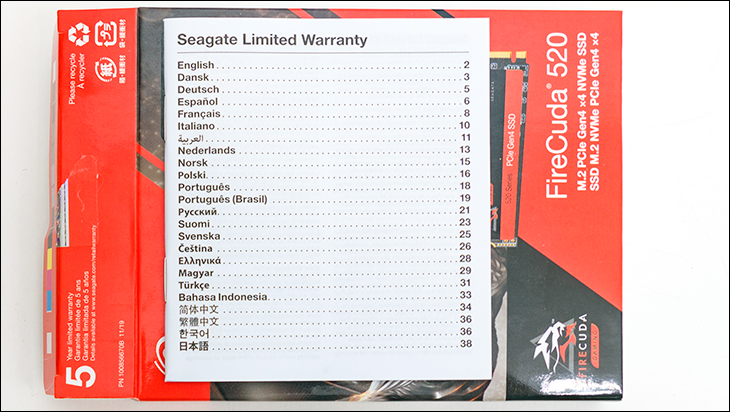
The accessory list is a bit on the svelte side. Basically, expect to find an installation pamphlet… and that is it. Of course, you can (and really should) download Seagate’s SeaTools software application as well as their branded version of Acronis TI HD. Both of which easily justify the bandwidth.
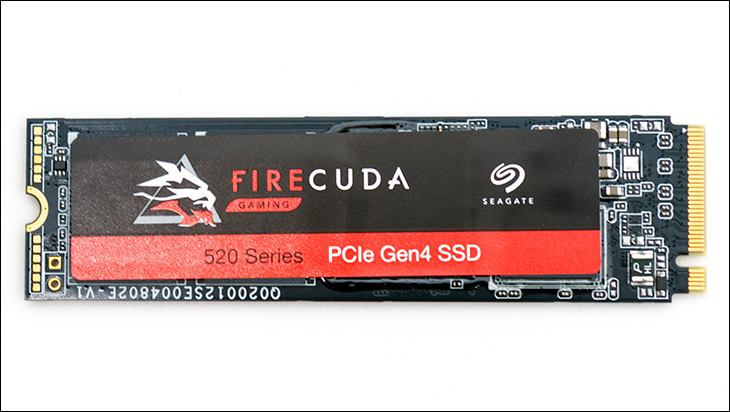
Moving on. The most obvious question anyone will ask upon hearing about the 510 SSD series replacement is simple: what has changed. We know that is what we wanted to know so let’s compare and contrast the ‘old’ 510 SSD with the new 520 SSD.
The first change between the 510 SSD and 520 SSD series is the naming. With the 510 series Seagate broke their drives into two models: the BarraCuda 510 and FireCuda 510. Both got slightly different firmware and were targeted as slightly different buyers. That was the plan. In reality, most did not bother to dig beneath the surface and instead simply assumed that the BarraCuda was the small version (as the capacity was 250GB to 1TB) and the FireCuda was the ‘large version’ (1TB, 2TB… and ultra-rare 4TB capacity options).
For this generation of ‘520’ series there is only the FireCuda. It ranges in capacity from 500GB to 2TB and with the exception of the name ‘FireCuda’ and the value orientated price… that is about all it shares in common with its previous brethren. This consolidation does make a lot of sense. First it removes the confusion and questions over Barra vs Fire cuda branding. More importantly, given the fact that even the smallest FireCuda 520 will offer performance in excess of the largest FireCuda 510… it would not have made a lick of sense to do anything besides combine the big and small versions into the same model.
The largest and most noticeable change is moving on from PCIe 3.0 x4 to a PCIe 4.0 x4 interface. With PCIe 3.0 each lane was good for about 985MB/s of theoretical bandwidth – or about 3.9GB/s in four lane configurations. Theoretically speaking that is. The reality is 3.5GB/s was pushing it as there is always performance robbing overhead to deal with. PCIe 4.0 doubles this to 1.97GB/s per lane – or a theoretical bandwidth of about 7.88GB/s. Does this mean the FireCuda 520 is fully taking advantage of the wider bus? No.
There are three reasons why the 520 1TB is rated ‘only’ for 5000/4400 r/w performance… or about 2.53 lanes worth of data. First, much like PCIe 3.0 we are not going to see 100 percent bus saturation with M.2 devices. These drives already are going to run hotter than the PCIe 3 generation. They are going to run hotter as they have to crunch a lot more numbers, access a lot more cells, and generally speaking do both of that while still staying inside the M.2 electrical limitations… not to mention the realities of trying to cool hot running, yet small form-factor devices.
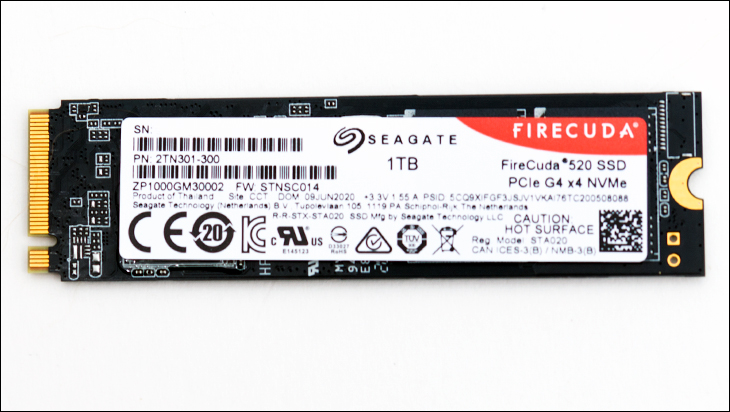
In this regards the Seagate FireCuda 520 is actually above average. It does run warm, and could certainly could use a heat sink that is not included, but it is not bad either. Considering darn near any good motherboard either actively cool the M.2 slot or covers it in a big heat spreader (or optimally does both) it is not a deal breaker. It just is a trend we do not like seeing – as not every motherboard can properly cool both sides of this double sided PCB based drive.
This brings us to reason number two for ‘only’ hitting 5GB/s. The NAND. Seagate has upgraded from 64-layer Toggle Mode 2 BiCS 3 TLC, to 96 layer BiCS 4 TLC NAND. As we have gone over in the past that is a huge improvement in performance. Unfortunately, even doubling the performance of the NAND still leaves it slightly behind the competition in shear speed and it will not be until 112-layer BiCS 5 lands that the typical 8-channel controller can get close(r) to saturating this rather wide PCIe 4.0bus (assuming the rumors are correct and 112-layer BiCS 5 TLC will do 1.2GT/s vs. 96-BiCS 4 TLC’s 800MT/s). So, it is a bit of mixed bag on this upgrade. It is better. It is cooler running. It is even dense enough to allow for single side 1TB M.2 drives. It just is not a magic bullet and is a classic example what happens when a NAND manufacture goes through multiple reorganizations in a relatively short period of time.
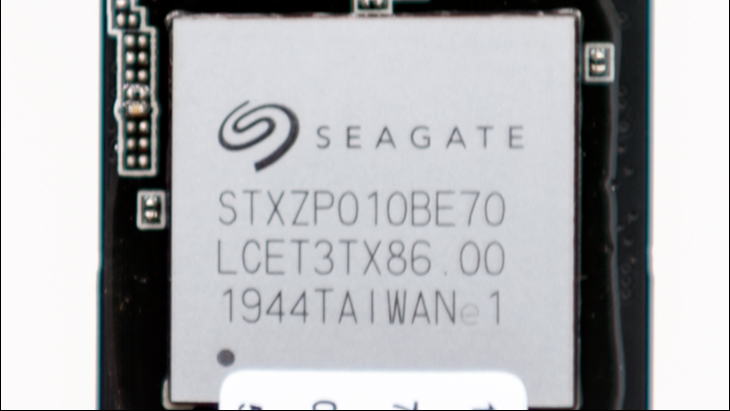
To be fair, and the third and largest reason, we maybe are being a little too rough is this excellent BiCS 4 TLC NAND may not be fully harnessed with this ‘new’ controller. We are using quotations around new as it really is not a new controller. Phison, like most controller manufactures, use a modular ‘building block’ design (think AMD CPU) instead of a monolithic one (think Intel CPU) to (re)create a given storage controller. To ‘create’ the ‘new’ E16, Phison took their PCIe 3.0 E12 controller, pulled the PHY controller and plunked in a PCIe 4.0 PHY. This is how they were able to be the first to market, and still are only one a few manufacturer’s with PCIe 4.0 x4 controllers ready to go… and why their much hyped, more core equipped ‘E18’ controller is still vaporware (which was supposed to feature an extra main processor plus their CoXProcessors to handle the load and offer true PCIe 4 saturation abilities).
To be fair they did also bake in numerous low-level improvements that do help the E12 2.0… err… the all new and totally redesigned™ E16 perform better. They are also completely up front about it. They state clearly that this is an evolutionary controller. Not a revolutionary one. These improvements take the form of smarter pseudo-SLC caching (fully variable depending on free capacity), numerous firmware improvements (the controller wastes fewer cycles thanks to cleaner, more efficient code), and a new 4th generation LDPCC engine. Which is faster and smarter at handling ECC errors. So much so that ‘perfect storms’ are less likely to occur and even less likely to be noticed by the end user. What it cannot do is match later released PCIe 4 controllers… and why the FireCuda 520 series is ‘limited’ to ‘only’ 5.5/4.4 GB/s performance levels vs. the 7/5 GB/s drive(s) hitting the market. On the positive side, the Phison also improved the IOPS the E16 can dish out. For example, the Seagate FireCuda 510 1TB was rated for 620K/600K. The E16 based FireCuda 520 1TB is rated for 750K/700K – a 21 percent increase in read and 17 percent increase in write.
Also on the positive side, it is fully backwards compatible and when we placed this bad-boy in to our old storage testbed it hummed along with nearly the same low-level performance levels and only the sequential file performance capped by the PCIe 3.0 bus. More importantly, less than some had hoped or not… we are talking about a 17-45 percent increase performance. In one generation. Intel would kill entire continents worth of mother’s and grandmothers for that kind of boost in one gen. Yet some will consider it to be disappointing. That is the crazy world we live in, where miracles are not only commonplace but expected.
One last mitigating factor we have to go over is when the 510 was released it came with a rather reasonable MSRP of $230 and typically goes/went for about $200. The FireCuda 520 matches the launch day MSRP of about $230 and can be found for only about $10 more than the FireCuda 510 1TB. That is a lot of bang for your buck. One that would not have been possible if not for Phison offering their E16 at rock bottom prices. So while not perfect, this is a pretty darn good upgrade for a single product cycle. Not perfect, plenty of room for future models to build upon this foundation… but a very good start.




